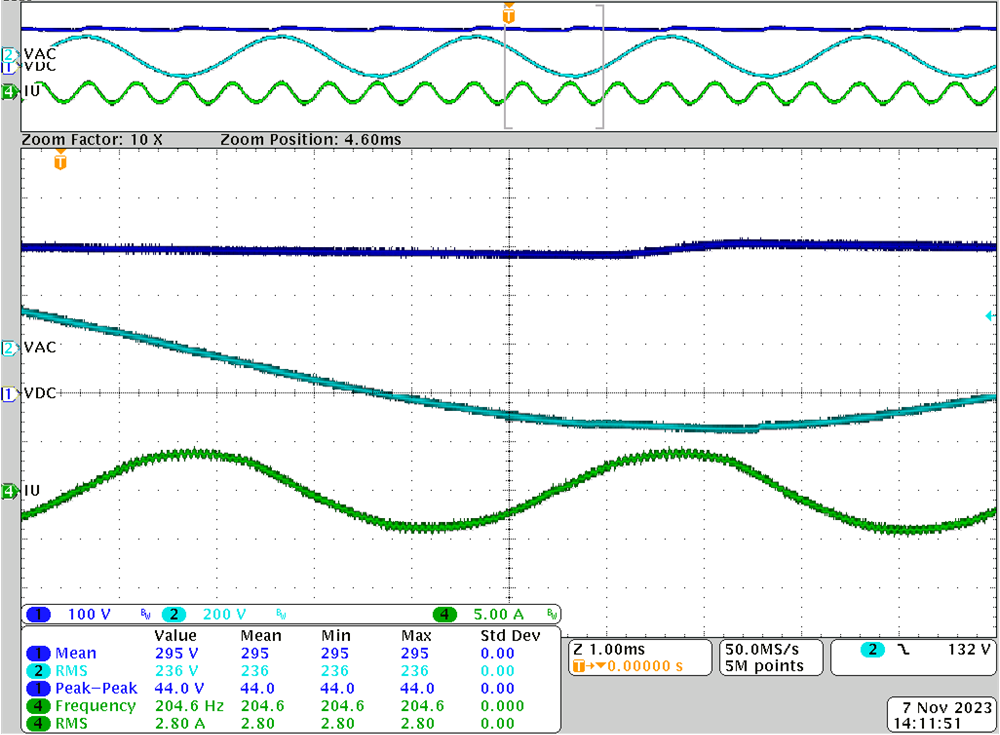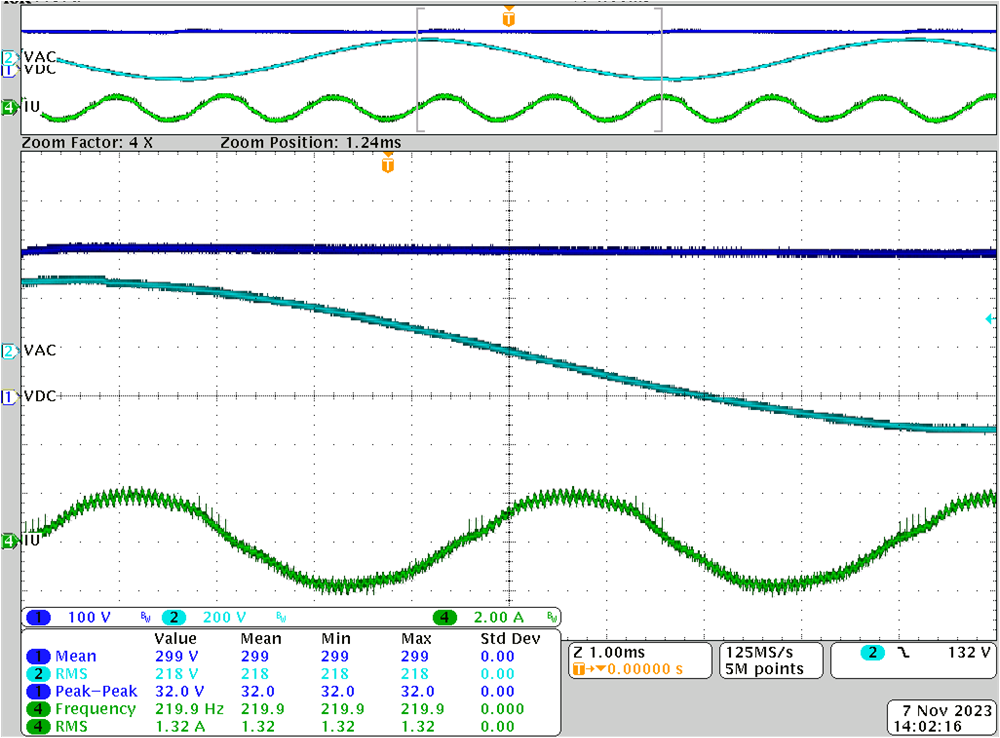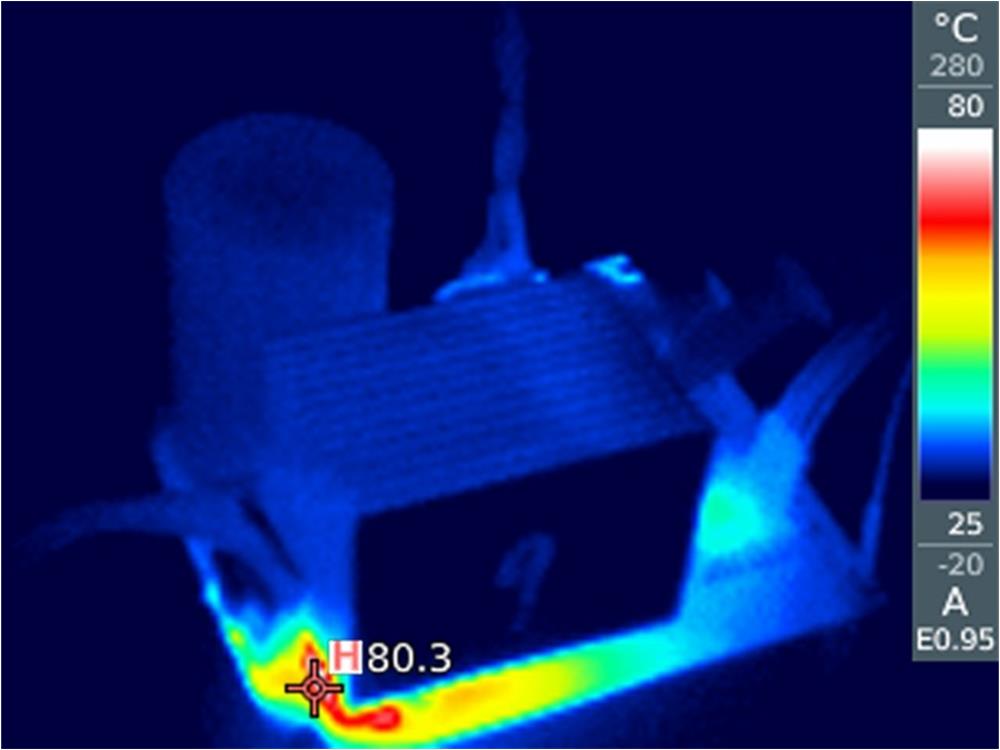TIDUF60 December 2023
- 1
- Description
- Resources
- Features
- Applications
- 6
- 1System Description
-
2System Overview
- 2.1 Block Diagram
- 2.2 Design Considerations
- 2.3 Highlighted Products
- 2.4 System Design Theory
-
3Hardware, Software, Testing Requirements, and Test Results
- 3.1 Getting Started Hardware
- 3.2 Getting Started GUI
- 3.3
Getting Started C2000 Firmware
- 3.3.1 Download and Install Software Required for Board Test
- 3.3.2 Opening Project Inside CCS
- 3.3.3 Project Structure
- 3.3.4 Test Procedure
- 3.4 Test Results
- 3.5 Migrate Firmware to a New Hardware Board
- 3.6 Getting Started MSPM0 Firmware
- 4Design and Documentation Support
- 5About the Author
3.4.1 Load and Thermal Test
Figure 3-38 is a waveform at 3000 RPM (200 Hz) under 500-W dyno load. The waveform includes the following display:
- CH1 (Blue): DCBUS voltage
- CH2 (Light Blue): AC Input Voltage
- CH4 (Green): Current of phase U
 Figure 3-38 Phase Current and Voltage Waveforms of Motor at 500 W, 200 Hz
Figure 3-38 Phase Current and Voltage Waveforms of Motor at 500 W, 200 HzFigure 3-38 shows a waveform at 3300 RPM (220 Hz) under 300-W dyno load with field weakening enabled. The motor tested is rated at 3000 RPM (200 Hz) and now works at field-weakening status.
- CH1 (Blue): DCBUS voltage
- CH2 (Light Blue): AC Input Voltage
- CH4 (Green): Current of phase U
 Figure 3-39 Field Weakening Test at 300 W, 220 Hz
Figure 3-39 Field Weakening Test at 300 W, 220 HzThis board is designed to work at 750 W for a short amount of time (≤ 1 minute), pay attention to rising temperatures. If running the board at high power or for a long time, use an external cooling fan to cool down the heat sink. Figure 3-38 shows the board temperature rising at 500 W, 3000 RPM (200 Hz).
 Figure 3-40 Thermal Test Under 220 VAC, 500 W, 200 Hz
Figure 3-40 Thermal Test Under 220 VAC, 500 W, 200 Hz